
views

Figure out what type of electric fence you will need. If you need a portable fence, purchase lightweight equipment such as polywire and tape, plastic posts, battery-powered energizers, and reels. If you need a permanent fence, purchase high-quality insulators, self-insulating electro-wood, or wooden posts. High-tensile wire should be used to fence livestock while electro-rope and tape work well for horses.Make an Electric Fence Step 1Bullet1.jpg

Determine the type of animal you want to fence. Horses are best fenced with conductors that are highly visible, such as rope and tape. Slower-moving animals, such as cattle and sheep, can be fenced with steel wire or polywire. Regardless of the animals you are containing, the structure needs to be strong and stable because nocturnal, feral animals and other wildlife will fail to see the wires and run into the fence. If the fence is not strong, these frequent hits will knock the fence down.
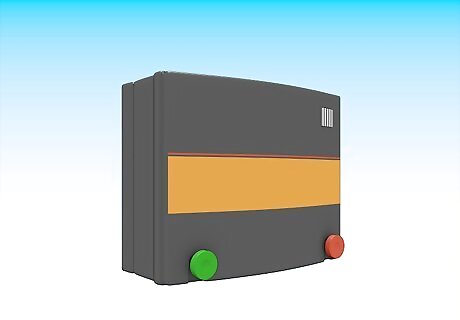
Choose the appropriate energizer. The type of energizer you choose depends upon the fence's length, the amount of vegetation that may grow on the conductors, the type of fencing material, the type of animals, and whether or not a 230-volt power source is readily available. Use a mains-powered energizer whenever possible. This type of energizer is located inside a building and does not use batteries. The cost to operate a mains-powered energizer is low.Make an Electric Fence Step 3Bullet1.jpg Use a dry battery-powered energizer if your electric fence is moved on a daily or frequent basis. You will need an internal battery, such as an ESB25 or ESB115. Dry battery-powered energizers are easy to relocate and require no maintenance. Although these type of energizers are not rechargeable, they usually last 4 to 6 months before they need to be replaced.Make an Electric Fence Step 3Bullet2.jpg Use a wet battery-powered energizer if your electric fence will be permanent or moved infrequently. More specifically, a12v energizer with a 12v 80 ampere-hour (Ah) leisure battery will work. Wet battery-powered energizers are more powerful than the dry type and can operate longer electric fences.Make an Electric Fence Step 3Bullet3.jpg
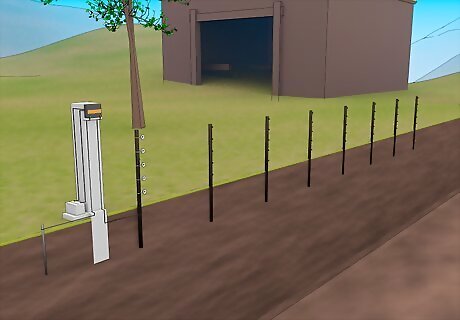
Plan the location of the earth terminal. For the electric fence to work correctly, it needs to have optimal conditions for its operation. For example, electric current flows better in wet conditions than in dry conditions. Regardless of the battery system you are using, use at least a 3.3-foot (1 m) galvanized earth stake should be used. If you are using a mains energizer and must operate on poor soil conditions such as light or sandy soil, more than 1 earth stake could be necessary. If additional stakes are used, space them 9.8 feet (3.0 m). (3 m) apart, and connect them with a lead-out cable.
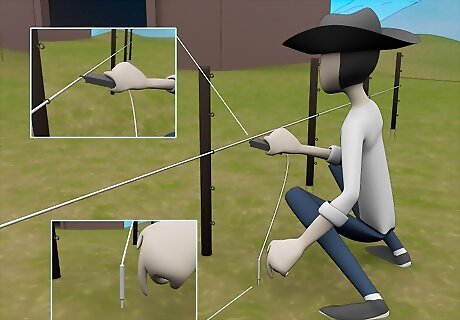
Test your fence. For temporary or portable fencing, use a fence line tester. For permanent fencing, use an LED voltmeter. To operate either type of tester, push the probe into the ground, and touch the tester terminal to the fence. Be sure to test at the furthest end from the energizer to get an accurate measurement of the voltage. The fence should have a minimum of 3000 volts. If it is lower, the livestock will not get sufficient shock and will cause problems.
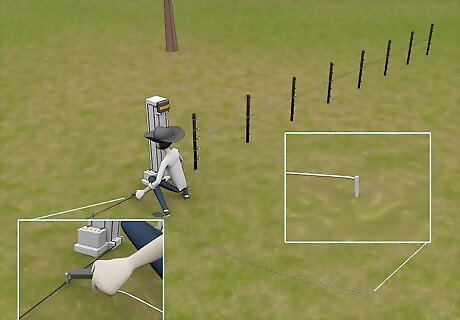
Test the earth. Use a metal bar or earth stake at least 328 feet (100.0 m). (100 m) from the stakes, and short the electric fence to earth. One probe of the voltmeter must be connected to a stake. The other probe should be pushed into the ground as far away from the stake as possible. If the reading is 400 or 500 volts, the fence is fine. If it reads less than 400 or 500 volts, the condition of the earth needs to improve.
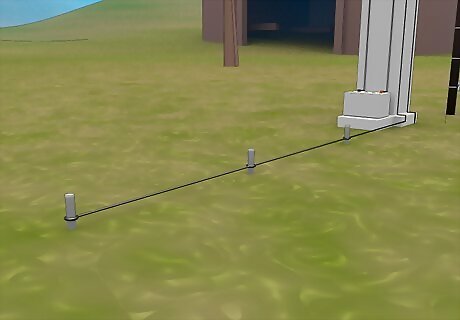
Add additional earth stakes 3.3 feet (1.0 m). (1 m) apart. Connect the top of each stake with lead out cable. Re-check the voltage. Remove the short from the fence by removing the metal bar or stake.
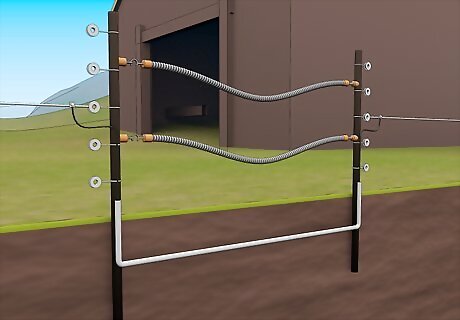
Build an electric fence gates. Transfer power under the gate from 1 side to the other with an under-gate cable. Permanent and temporary gates should be wired identically.
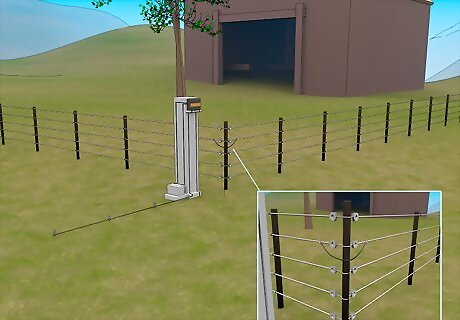
Install fence lines. Connect your high tensile wire or electro-rope and tape with insulators, depending on which type of animal you are fencing in. Your wire or electro-rope will come with instructions on how to properly space it.















Comments
0 comment